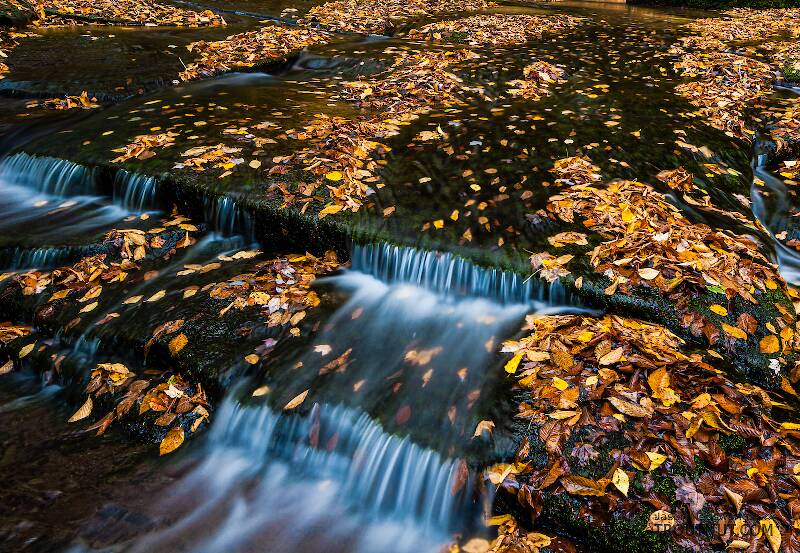
Blue-winged Olives
Baetis
Tiny Baetis mayflies are perhaps the most commonly encountered and imitated by anglers on all American trout streams due to their great abundance, widespread distribution, and trout-friendly emergence habits.
Featured on the forum

Troutnut is a project started in 2003 by salmonid ecologist Jason "Troutnut" Neuswanger to help anglers and
fly tyers unabashedly embrace the entomological side of the sport. Learn more about Troutnut or
support the project for an enhanced experience here.
Troutnut on Jul 3, 2006July 3rd, 2006, 11:11 am EDT
I'm just reading through Ted Fauceglia's book Mayflies. (The pictures are great, for those who haven't bought it. Anyone who likes this site will like that book.)
One interesting thing I've noticed is Ted's description of the emergence of species like Epeorus pleuralis and Attenella attenuata which are usually said to emerge on the bottom of the stream and float to the surface as duns. Ted writes that they begin to emerge on the bottom but rise to the surface before they've fully left the nymphal shuck, and struggle free during their rise.
This seems less plausible, in addition to contradicting earlier books. I'm wondering if he's basing it on new entomological information, or if it's just a misinterpretation of what past books have said. Does anyone know?
One interesting thing I've noticed is Ted's description of the emergence of species like Epeorus pleuralis and Attenella attenuata which are usually said to emerge on the bottom of the stream and float to the surface as duns. Ted writes that they begin to emerge on the bottom but rise to the surface before they've fully left the nymphal shuck, and struggle free during their rise.
This seems less plausible, in addition to contradicting earlier books. I'm wondering if he's basing it on new entomological information, or if it's just a misinterpretation of what past books have said. Does anyone know?
Jason Neuswanger, Ph.D.
Troutnut and salmonid ecologist
Troutnut and salmonid ecologist
Taxon on Jul 3, 2006July 3rd, 2006, 4:24 pm EDT
Jason-
Hafele/Hughes have the following to say about the subject in their recently (2004) published book, Western Mayfly Hatches:
"Some Epeorus and Ironodes rise to the surface as duns, buoyed up by gases trapped in the folds of the wings. Others rise as nymphs, buoyed to the surface by a bubble of gas that forms under the cuticle. Those that rise as nymphs emerge into the dun stage in the surface film. They are efficient emergers, and very few are crippled in the process."
I realize this doesn't answer your question about emergence behavior of a particular species, Epeorus pleuralis, which we don't have in the West, but am sharing it with you anyway, assuming you may not have ready access to the book.
Hafele/Hughes have the following to say about the subject in their recently (2004) published book, Western Mayfly Hatches:
"Some Epeorus and Ironodes rise to the surface as duns, buoyed up by gases trapped in the folds of the wings. Others rise as nymphs, buoyed to the surface by a bubble of gas that forms under the cuticle. Those that rise as nymphs emerge into the dun stage in the surface film. They are efficient emergers, and very few are crippled in the process."
I realize this doesn't answer your question about emergence behavior of a particular species, Epeorus pleuralis, which we don't have in the West, but am sharing it with you anyway, assuming you may not have ready access to the book.
Troutnut on Jul 3, 2006July 3rd, 2006, 6:11 pm EDT
Thanks Roger. You guessed correctly -- I don't have that book yet. What they wrote echoes what I've seen in every other book about the eastern hatches.
This book has one strange description for several species: that the emergence takes place neither at the surface nor on the bottom, but during the rise up to the surface.
I'm guessing it's just an error, but since it is the most recent work published on mayflies I thought I'd see if there's more to it.
This book has one strange description for several species: that the emergence takes place neither at the surface nor on the bottom, but during the rise up to the surface.
I'm guessing it's just an error, but since it is the most recent work published on mayflies I thought I'd see if there's more to it.
Jason Neuswanger, Ph.D.
Troutnut and salmonid ecologist
Troutnut and salmonid ecologist
Troutnut on Jul 4, 2006July 4th, 2006, 4:31 am EDT
Here's something that might answer the question, from Malcolm & Knopp's Mayflies:
So maybe the "hatching while rising" thing happens for some species and replaces the behavior of hatching at the surface.
The duns may emerge while the nymphs remain attached to the riverbed (moderate- to fast-water dwelling species such as E. pleuralis) or while rising to the surface film (slow-water-dwelling species).
So maybe the "hatching while rising" thing happens for some species and replaces the behavior of hatching at the surface.
Jason Neuswanger, Ph.D.
Troutnut and salmonid ecologist
Troutnut and salmonid ecologist
Taxon on Jul 4, 2006July 4th, 2006, 11:36 am EDT
Jason-
Makes sense to me.
Makes sense to me.
GONZO on Sep 12, 2006September 12th, 2006, 11:57 am EDT
Just thought I'd chime in on this one, for what it's worth. My impression is that there's a certain amount of flexibility with regard to methods of emergence for many species. While they may have a "preferred" method of emergence, alternatives serve as a kind of adaptive safety valve to insure survival under atypical conditions (floods, drought). Even under relatively "normal" conditions, a few specimens may display less typical methods of emergence. This seems to be rather well-documented for Isonychia and Siphlonurus (terrestrial or aquatic emergence); but many species in such diverse genera as Drunella, Ephemerella, Epeorus, and Maccaffertium also display such flexibility at times. For example, I have watched a march brown nymph (M. vicarium) crawl out on a rock and emerge successfully in typical stonefly fashion! While I'm sure that this behavior is quite unusual for this species (I've never seen it documented), it does serve to demonstrate this flexibility. So, it seems quite plausible that some species of Epeorus might emerge on the bottom, on the surface, or somewhere in between. My only quibble with the Knopp (Mayflies) information on Epeorus emergence is the description of E. vitreus (yellow quill) as a slow water dweller. That does not match my experience with this species.
Softhackle on Oct 31, 2006October 31st, 2006, 12:30 am EST
This is probably a bit off the subject, but I've yet to see any definative proof that "flies rise to the surface on a bubble of air".I do not disagree that flies do fully hatch underwater, and come to the surface, However, I have not seen proof of the air bubble. Jason, if you've got some pictures that illustrate this phenomenon, I'd love to see them.
Mark
Mark
"I have the highest respect for the skilled wet-fly fisherman, as he has mastered an art of very great difficulty." Edward R. Hewitt
Flymphs, Soft-hackles and Spiders: http://www.troutnut.com/libstudio/FS&S/index.html
Flymphs, Soft-hackles and Spiders: http://www.troutnut.com/libstudio/FS&S/index.html
Quick Reply
Related Discussions
Topic
Replies
Last Reply
1
Oct 28, 2008
by GONZO
by GONZO
0
Oct 24, 2006
by Troutnut
by Troutnut





